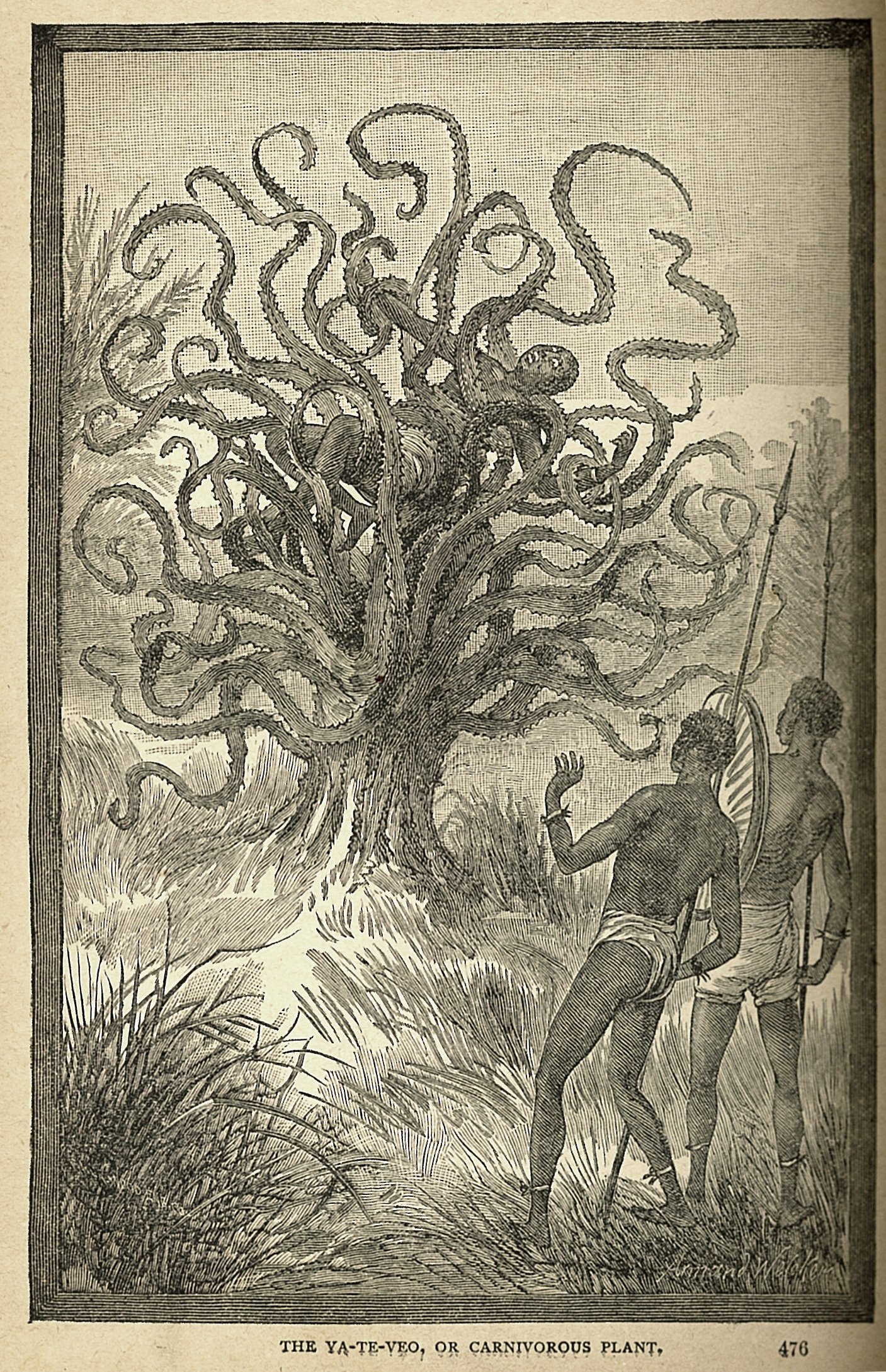Sunday, January 26, 2014
The Man-Eating Tree of Nubia
As readers of this blog, you're obviously all familiar with cryptozoology. But have you heard of cryptobotany? It's a real field, though a small one-- and its version of Bigfoot is the Nubian Tree. This plant is described in only one account-- which comes from Egypt in the late 1800s. The story sounds fantastical, and is probably a work of fiction. But nonetheless, it's a fascinating tale of cryptid foliage, and it deserves a place on BeastPedia.
The Man-Eating Tree is a deadly organism, but to the unwary it seems appealing. It is always found in shade-filled clearings, surrounded by lush grass. Golden fruit hangs from its branches, and dew glistens on its leaves. This harmless appearance is a carefully-constructed trap-- every facet of which is lethal. The plant grows alone because it poisons all nearby trees. Its fruit serves as a lure, drawing animals to their deaths. And its dew drips onto the grass below-- nourishing it, and causing it to grow tall. Why is this so dangerous? Because it conceals the skeletons of previous victims, lying beneath the tree.
When prey approaches, the tree's leaves begin to rustle-- with or without a breeze. These leaves are the plant's primary weapons, capable of latching onto victims and sucking their blood. Usually, the Man-Eating Tree feeds on wildlife-- but when they're available, it will take human victims. A man can be consumed in under a minute, wrapped up in long branches and drained of life.
Predatory trees abound in cryptobotany-- though few are as deadly as this one. Fortunately, none of them are backed by sgood evidence. Carnivorous plants do exist, but most of them feed solely on insects. The biggest may occasionally catch a shrew-- but there's a big difference between a two-inch rodent and a six-foot human. Never fear; you're safe from the world's foliage!
Read more about the Man-Eating Tree of Nubia:
http://vampiresrealm.files.wordpress.com/2011/11/the-man-eating-tree-phil-robinson.pdf
Image from http://upload.wikimedia.org/wikipedia/commons/6/60/The_ya-te-veo.jpg (depicting another man-eating tree, not the one described here)
Subscribe to:
Post Comments (Atom)

No comments:
Post a Comment